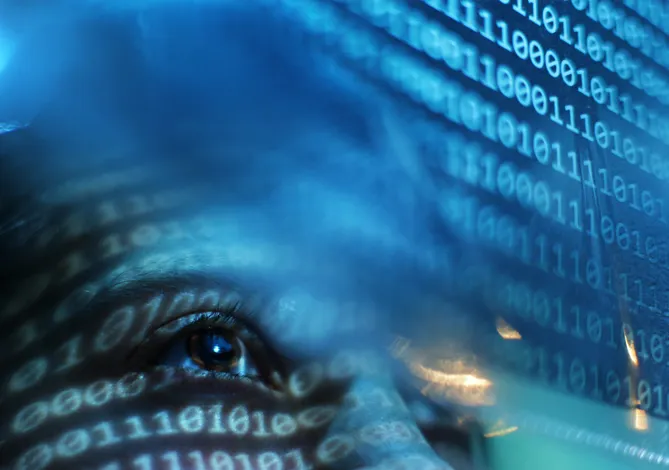-
CENTRES
Progammes & Centres
Location
Establishing a global bioattribution enterprise is crucial to enhancing current frameworks, integrating emerging technologies, and fostering international collaboration

The concept and use of biological weapons is not a “new” concept. Biological agent use in warfare or criminal activities is rare as most cases of biological weapon use tend to be criminal, as was seen in the United States (US) Anthrax attacks in 2001, which has been attributed to Dr Buce Ivans, an American Microbiologist, but not necessarily attributed to a terrorist group. Another consideration in biological weapon use and detection is identification. Due to the similarity of natural agent development to vaccine development, most materials are easily accessible, and the impact of these is difficult to trace.
The BWC is the first multilateral disarmament treaty to ban a category of weapons of mass destruction (WMD).
Bioattribution is a core facet of assigning accountability for biological warfare or accidental biological infections at a mass level. Bioattribution refers to the forensic attribution of development or use-based accountability. The central tool deployed to assess these areas as of now is the Biological Weapons Convention (BWC). The BWC is the first multilateral disarmament treaty to ban a category of weapons of mass destruction (WMD). It prohibits the “development, production, acquisition, transfer, stockpiling and use of biological and toxin weapons.” In November 2022, the BWC met for its ninth review conference. Regarding potential new directions, the ninth review conference negotiated activities for the upcoming inter-sessional period until the tenth review conference, which will be held in 2027. A significant development was the States Parties opting to extend the Implementation Support Unit (ISU) mandate.
However, there were gaps in the discussions. States Parties did not move forward with operationalising BWC Article VII, which mandates States Parties to assist each other in the event of a biological weapons attack, including in bioattribution. The Indian and French delegates attempted to highlight a need for databases and guidelines and China promoted Tianjin Biosecurity Guidelines, which ensures ethical use of innovation and implies bioattribution in case of malicious use; however, these proposals did not gain traction. Due to this gap, the tenth review conference must address these proposals and additional reviews that might be required, including artificial intelligence use in biological agent development, future biological agents, ethical guidelines and attribution methods.
Identifying biological agents and weapon development is still difficult and undiscussed under the BWC, leaving bioattribution to happen primarily at a global level with limited regional and global efforts. Globally, bioattribution is a lacking concept in most countries, which tend to follow guidelines as set by the United States (US) Centers for Disease Control and Prevention (CDC) or The North Atlantic Treaty Organization (NATO) and the World Health Organization (WHO).
The current methods of detection include Sanger Sequencing, Radosavljevic and Belojevic’s Method and High-Throughput Sequencing, which are adopted in part by organisations like NATO and the CDC. Besides the CDC, the US’s National Biodefense Strategy, released in October 2022, outlines the US' commitment to enhancing its national attribution capacity. The strategy emphasises an integrated procedure involving multiple agencies, including The Department of Health and Human Services (HHS) and the Federal Bureau of Investigation (FBI) are designated to lead this effort, with support from various agencies, including the Department of the Interior, the US Department of Agriculture, the Department of Energy, the Department of Homeland Security, the Environmental Protection Agency, and the Intelligence Community. Additionally, the strategy aims to bolster the capabilities of the UN Secretary-General's Mechanism for Investigation of Alleged Use of Chemical and Biological Weapons (UNSGM) to ascertain facts, including attribution, related to the alleged use of biological or toxin weapons. The Department of State, the Department of Defense, and the FBI are identified as the fundamental entities responsible for leading this aspect of the strategy.
The strategy aims to bolster the capabilities of the UN Secretary-General's Mechanism for Investigation of Alleged Use of Chemical and Biological Weapons (UNSGM) to ascertain facts, including attribution, related to the alleged use of biological or toxin weapons.
Aside from the US, no national governance documents include bioattribution to such a degree. India, for example, has a draft biosafety manual for public safety laboratories released under its National Centre for Disease Control (NCDC). It briefly discusses bioterrorism and identifies unethical and illegal use of biological agents. However, these methods need to be updated more frequently.
However, the forensic investigation of hoax, suspected, or actual biological weapons attacks, as well as bioproliferation activities, still plays a pivotal role in biosecurity. Bioattribution methods need to be strengthened to address this gap.
Identifying and holding perpetrators and enablers accountable through legal or policy actions is crucial. For a conducive bioattribution framework, it is important to emphasise awareness, assessments, training, pilot efforts, and create global standards.
Forensic bioattribution needs to be regularly upgraded to include emerging technology and geopolitics as considerations for effective global governance in the field of biological weapon development.
Thus, global governance must consider the significance of integrated investigations conducted by law enforcement and forensic science, informed by public health resources, to attribute biological threats. Attribution is the foundation of accountability, whether through legal prosecution or policy actions. Building a global attribution enterprise is essential for a more robust and comprehensive approach to biosecurity.
There is a necessity for addressing criminal and terrorist acts, both state and non-state, involving dangerous biological agents, pathogens and toxins. Critical components of a bioterrorism-proliferation forensics and attribution programme include international agencies and national organisations collaborating to cover law enforcement investigation, attribution in legal and policy contexts, public health investigation, and forensic science. Organisations like existing biotechnology departments, disarmament wings in defence organisations, and enhancements of the World Health Organisation can address these steps. These components work together to identify causative agents, sources, and the nature of outbreaks and support actions through criminal justice and legal processes.
Critical components of a bioterrorism-proliferation forensics and attribution programme include international agencies and national organisations collaborating to cover law enforcement investigation, attribution in legal and policy contexts, public health investigation, and forensic science.
Additionally, international alliances like the Global Alliance For Genetic Health (GA4GH) or organisations akin to such platforms can create guidelines for practical staff training in safe and encouraged reporting mechanisms and coordinate with the integration of regional/national law enforcement, public health, forensic science, legal, and policy domains, which are necessary for a comprehensive investigative response. Incorporating biosafety standards and reporting in bioattribution can help assess the origins of pandemics from biosafety labs faster and create more holistic bioattribution frameworks. Key components include well-staffed teams, technical forensic capabilities, legal processes, and decision-making frameworks.
While the methods mentioned above can enhance current bioattribution frameworks and can be accomplished through existing structures, there is a need to establish a global bioattribution enterprise that incorporates the following:
The challenge of strengthening biosecurity through bioattribution involves addressing gaps in current international frameworks, particularly within the Biological Weapons Convention (BWC). The recent ninth review conference revealed progress and shortcomings, with States Parties extending the Implementation Support Unit (ISU) mandate but falling short in operationalising BWC Article VII.
The emphasis on integrated investigations by law enforcement and forensic science, informed by public health resources, highlights the significance of identifying and holding perpetrators accountable. These recommendations pave the way for building a comprehensive global attribution enterprise, contributing to a more secure future.
The challenge of strengthening biosecurity through bioattribution involves addressing gaps in current international frameworks, particularly within the Biological Weapons Convention (BWC).
Similar to cyberspace, where jurisdictions are blurry, with the rapid transfer rate in biological infection, attribution is difficult to determine and differentiate from natural infection; however, with existing guidelines and identification methods aligned with appropriate reporting requirements, the scope of bioattribution improves.
Establishing a global bioattribution enterprise is crucial to enhancing current frameworks, integrating emerging technologies, and fostering international collaboration. This comprehensive approach is vital for ensuring accountability, protecting against biothreats, and advancing global biosecurity.
Shravishtha Ajaykumar is Associate Fellow with the Centre for Security, Strategy and Technology at the Observer Research Foundation
The views expressed above belong to the author(s). ORF research and analyses now available on Telegram! Click here to access our curated content — blogs, longforms and interviews.

Shravishtha Ajaykumar is Associate Fellow at the Centre for Security, Strategy and Technology. Her fields of research include geospatial technology, data privacy, cybersecurity, and strategic ...
Read More +